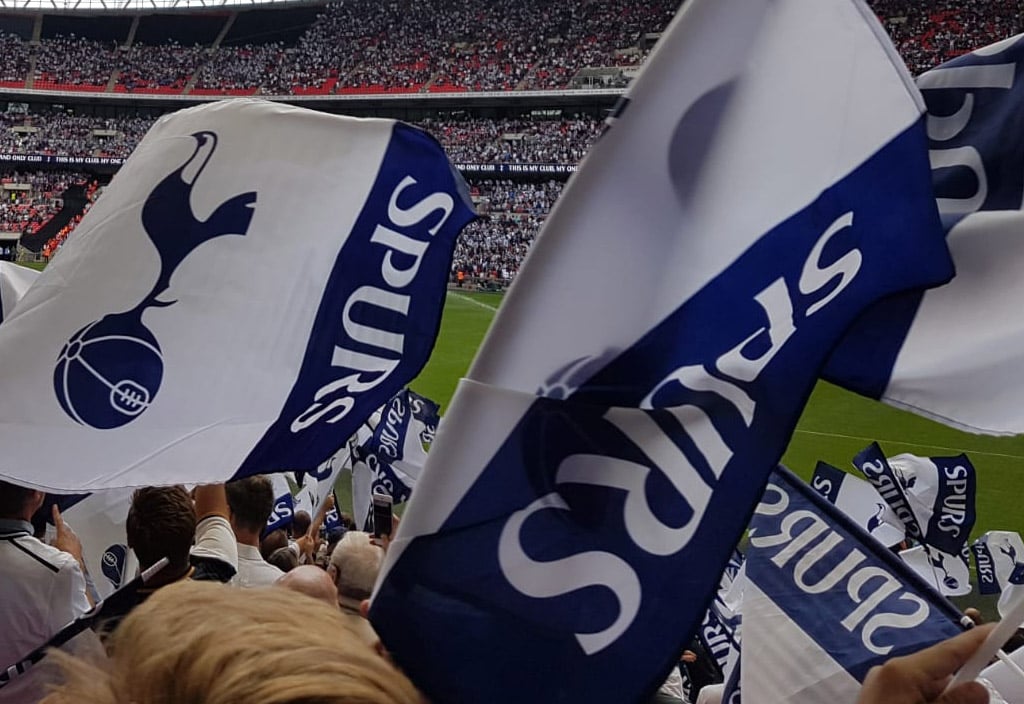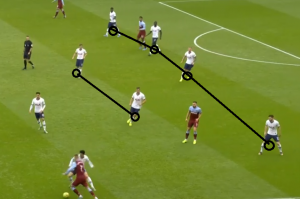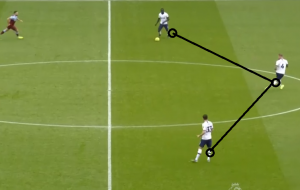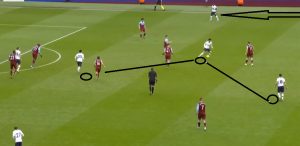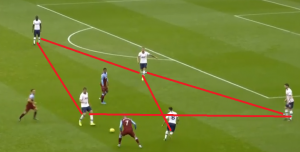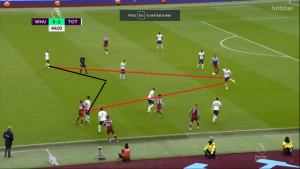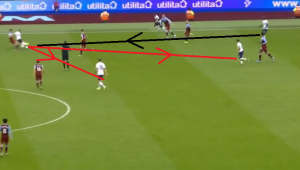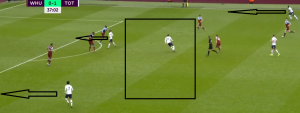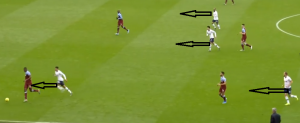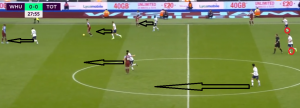It has only been little over a week since Jose Mourinho took over as the new head coach of Tottenham Hotspur but it is clear that he has already put his fingerprint on the team.
The Portuguese tactician has insisted that he is employing the same tactical base that was used by Mauricio Pochettino and his coaching staff, and that it will take time for him to implement all of his ideas (Football.London).
However, from Tottenham’s display against West Ham United and Olympiacos, it is clear that there are already some radical departures from Pochettino’s ideas. Here are the three main tactical modifications the 56-year-old has made at Spurs in his first two matches in charge.
Back three/Back four
Under Mauricio Pochettino, Tottenham had been accustomed to playing with a back four as well as a back five, sometimes even switching between the formations during games.
However, in both systems, the Argentine preferred his midfield and forward players to play in a narrow set up fairly close to each other, while it was up to the full-backs/wing-backs to provide the width. The full-backs thus often had to cover more ground and complete more sprint per 90 minutes than other players in the Argentine’s system which is why he always preferred to rotate his full-backs.
In his first two games in charge, Mourinho has simplified the system by playing a back four, that switches to a back three when the team is in possession of the ball. In other words, while the players defend as a back four when Spurs have the ball, Serge Aurier pushes up the right-hand side while the left-back tucks inside to a left centre back position to make it a back three.
Switching to a back three in possession and pushing Serge Aurier high up the pitch has multiple benefits. Firstly, it allows Lucas Moura/Son Heung-min (whoever is playing on the right) to drift inside and offer an extra body in the central area in order to have more control of the midfield. Secondly, it allows the team to reap the benefits of Aurier’s athleticism and attacking quality while diminishing chances of him making an error in the defensive third.
MORE SPURS STORIES
By using a back three to build attacks from deep and a back four while defending, Mourinho has attempted to solve the defensive frailties that can come from playing with attacking wing-backs while still reaping the territorial advantage often gained when employing three central defenders.
Building attacks
Another major change Mourinho has made is in the way Tottenham build attacks from deep. Under Mauricio Pochettino, the midfield pivots in front of the back four (usually Harry Winks and Moussa Sissoko) played an important role in transitioning the ball from the defence into attacking areas. They were asked to drop deep to create overloads in Tottenham’s defensive third before moving the ball around the opposition’s press to work it into the likes of Christian Eriksen and Dele Alli. Thus, the deep-lying playmakers were essential to Pochettino’s system.
Although Mourinho like his predecessor has also chosen to employ two midfield pivots in Eric Dier and Harry Winks, their roles against West Ham United and Olympiacos have been much different to what it was previously. Mourinho and his coaching staff use the two pivots essentially just to screen the back four. When in possession, the two pivots are used to help rotate the ball between the three centre backs in order to open up space and passing angles.
However, the two central midfielders are often bypassed when the team attempts to get the ball from back to front with the three central defenders directly attempting to find one of the front four i.e Harry Kane, Lucas Moura, Dele Alli or Son Heung-min, who are given freedom to switch positions and drop into different pockets.
By getting the ball to forward players quicker who then bring the likes of Winks and Dier into play, the team doesn’t run the risk of losing the ball in their own half, which became an alarmingly regular occurrence under Pochettino this season. Further, the player playing on the left-hand side is asked to hog the touchline while Aurier also gets to the byline, thus stretching defences and giving Alli and Kane (who switch roles) more room to play in the middle of the park.
By bringing Christian Eriksen on for Eric Dier in the game against Olympiacos, what the former Chelsea and Manchester United boss did is essentially open up another passing option in the above-highlighted space forcing the opposition to play a little deeper.
Pressing
Under Pochettino, Tottenham pressed tactically with the forward players often showing the opposition defenders down certain channels and setting traps. While the intensity of the forward pressing had dropped off considerably under the Argentine, all players were involved in the press including the midfield pivots. While this meant that Tottenham had more of a chance of winning the ball higher up the field, it also made them vulnerable to the ball over the top as the centre backs had to play a high line.
What Mourinho has instead chosen to do is to increase the intensity of the pressing in the final third but involve mainly just the forward players. While Kane, Alli, Son and Moura (and at times Aurier and one of either Dier or Winks) are asked to hunt down the ball in the final third, the midfield pivots and the full-backs have tended to fall back in case the opposition play their way through the first press.
This essentially means that while the workload on the forward players has gone up, the team has at least 6 players behind the ball during most counter-attacking scenarios.
So the essence of Mourinho has tried to do at Tottenham so far is to make the team more defensively compact thus sacrificing some midfield control in the process. The 56-year-old has compartmentalised offensive and defensive duties and is betting on the team’s firepower upfront to optimize attacking opportunities that are created, rather than relying on the midfielders to play through the opposition block.
While one cannot argue against two wins from two games, the main objective of this set up hasn’t been fulfilled as the team has still looked defensively shaky in both the matches. However, in due course, the new Spurs boss will be confident that he can iron out the defensive issues.
Keep up to date with all the latest Tottenham news and opinion by following SpursWeb’s Facebook, Twitter and Instagram accounts.
